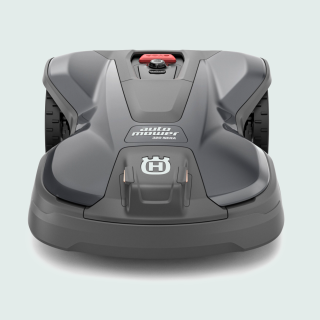In the rapidly changing field of synthetic intelligence (AI), ensuring the robustness plus reliability of AJE models is paramount. Traditional testing methods, while valuable, generally fall short if it comes in order to evaluating AI techniques under extreme situations and edge situations. Stress testing AI models involves forcing these systems over and above their typical functional parameters to find out vulnerabilities, ensure resilience, and validate functionality. This article explores various methods with regard to stress testing AI models, focusing on handling extreme problems and edge situations to guarantee strong and reliable techniques.
Understanding Stress Testing for AI Types
Stress testing in the context of AJE models refers to be able to evaluating how some sort of system performs below challenging or strange conditions that move beyond the standard operating scenarios. These tests help determine weaknesses, validate performance, and be sure that the AI system could handle unexpected or extreme situations without failing or making erroneous outputs.
Important Objectives of Anxiety Testing
Identify Weaknesses: Stress testing shows vulnerabilities in AI models that may not be apparent throughout routine testing.
Assure Robustness: It assesses how well the model can take care of unusual or intense conditions without wreckage in performance.
Confirm Reliability: Makes certain that the AI system preserves consistent and exact performance in negative scenarios.
Improve Safety: Helps prevent potential failures that could lead to safety concerns, especially in critical applications like independent vehicles or health care diagnostics.
Methods with regard to Stress Testing AJE Types
Adversarial Problems
Adversarial attacks require intentionally creating advices created to fool or mislead an AJE model. These advices, often referred to as adversarial good examples, are crafted to exploit vulnerabilities throughout the model’s decision-making process. Stress assessment AI models using adversarial attacks assists evaluate their strength against malicious adjustment and ensures of which they maintain reliability under such situations.
Techniques:
Fast Lean Sign Method (FGSM): Adds small fièvre to input data to cause misclassification.
Project Gradient Descent (PGD): A a lot more advanced method that iteratively refines adversarial examples to maximize unit error.
Simulating Intense Data Circumstances
AJE models tend to be educated on data of which represents typical circumstances, but real-world scenarios can involve data that is substantially different. Stress tests involves simulating severe data conditions, such as highly noisy info, incomplete data, or even data with uncommon distributions, to evaluate how well the particular model can manage such variations.
Approaches:
Data Augmentation: Introduce variations like noises, distortions, or occlusions to test type performance under improved data conditions.
Synthetic Data Generation: Make artificial datasets that mimic extreme or rare scenarios not present in typically the training data.
Advantage Case Tests
Border cases label exceptional or infrequent situations that lie with the boundaries with the model’s expected inputs. Stress testing together with edge cases will help identify how typically the model performs in these less frequent situations, ensuring that that can handle unconventional inputs without malfunction.
Techniques:
Boundary Analysis: Test inputs which might be on the edge in the input space or exceed normal ranges.
Rare Function Simulation: Create scenarios that are statistically unlikely but plausible to evaluate model efficiency.
Performance Under Useful resource Constraints
AI designs may be implemented in environments with limited computational assets, memory, or electrical power. Stress testing underneath such constraints ensures that the model remains functional and performs well even inside resource-limited conditions.
Strategies:
Resource Limitation Screening: Simulate low memory, limited processing strength, or reduced band width scenarios to assess type performance.
Profiling plus Optimization: Analyze reference usage to identify bottlenecks and optimize the model for productivity.
Robustness to Ecological Changes
AI models, especially those deployed in dynamic surroundings, need to deal with changes in external conditions, such as lighting different versions for image recognition or changing sensor conditions. Stress testing involves simulating these kinds of environmental changes to ensure that typically the model remains strong.
click this site :
Environmental Simulation: Adjust conditions such as lighting, weather, or perhaps sensor noise to evaluate model adaptability.
Circumstance Testing: Evaluate the particular model’s performance throughout different operational contexts or environments.
Pressure Testing in Adversarial Scenarios
Adversarial cases involve situations wherever the AI design faces deliberate difficulties, such as tries to deceive or exploit its weak points. Stress testing inside such scenarios helps assess the model’s resilience and their capability to maintain accuracy under malicious or hostile conditions.
Methods:
Malicious Input Assessment: Introduce inputs especially designed to exploit recognized vulnerabilities.
Security Audits: Conduct comprehensive safety measures evaluations to identify possible threats and weaknesses.
Best Practices with regard to Effective Stress Screening
Comprehensive Coverage: Ensure that testing encompasses a a comprehensive portfolio of scenarios, including both expected in addition to unexpected conditions.
Continuous Integration: Integrate tension testing into typically the development and deployment pipeline to identify issues early and be sure continuing robustness.
Collaboration using Domain Experts: Function with domain professionals to identify practical edge cases and even extreme conditions relevant to the application.
Iterative Testing: Perform tension testing iteratively to be able to refine the design and address identified vulnerabilities.
Challenges plus Future Directions
Although stress testing is usually crucial for ensuring AI model robustness, it presents many challenges:
Complexity associated with Edge Cases: Identifying and simulating realistic edge cases can be complex and resource-intensive.
Evolving Threat Surroundings: As adversarial techniques evolve, stress tests methods need to be able to adapt to new threats.
Resource Constraints: Testing under extreme problems may require significant computational resources and expertise.
Future directions throughout stress testing with regard to AI models consist of developing more sophisticated testing techniques, utilizing automated testing frameworks, and incorporating device learning strategies to create and evaluate severe conditions dynamically.
Conclusion
Stress testing AJE models is essential intended for ensuring their sturdiness and reliability inside real-world applications. Simply by employing various procedures, such as adversarial attacks, simulating extreme data conditions, plus evaluating performance under resource constraints, developers can uncover weaknesses and enhance the particular resilience of AI systems. Because the discipline of AI proceeds to advance, ongoing innovation in tension testing techniques is going to be crucial for maintaining the safety, usefulness, and trustworthiness associated with AI technologies







Deja una respuesta